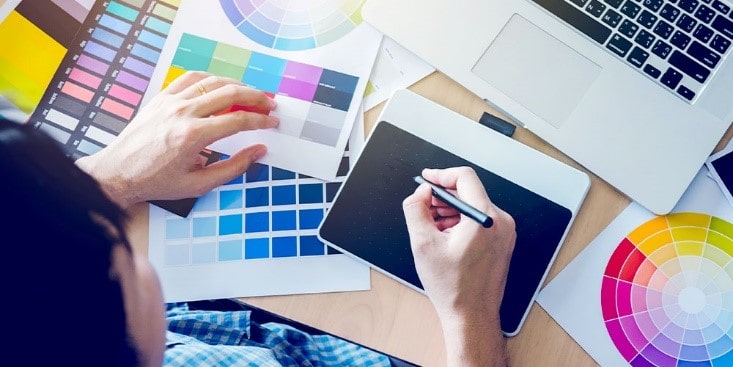Graphic design uses visual formation to solve problems and communicate different ideas through color, form, imagery, and typography. There is no one way to do this and that’s why there are various types of graphic design and every type is with its own area of specialization.
However they often overlap, each type of graphic design needs a specific set of design techniques and skills. Many designers specialize in a single type while others focus on a set of related and same types. But because the industry is continuously changing, designers must be lifelong learners and adaptable so they can add or change specializations in their whole careers. We are providing Graphic Design Services. if you want to read more details about this package click here Graphic Design Price List.
What is a Graphic Designer?
Graphic design is also known as communication design. Graphic designers are visual communicators who create visual concepts by using computer software or by hand. They communicate ideas to motivate, inform, or captivate consumers through both virtual and physical art forms that include graphics, images, or words.
The end goal of graphic designers is to make the organizations that hire them identifiable and prominent. By using a different variety of media they communicate a specific idea or identity to be used in promotions and advertising. These media include shapes, colors, fonts, images, print design, animation, logos, photography, and billboards. Graphic designers often collaborate on projects with multimedia animators, artists, and other creative professionals.
What Are the Elements and Principles of Graphic Design?
The elements and principles of graphic design include line, space, color, texture, typography, scale, shape, emphasis and dominance, and balance. Together, they work to make visually appealing work that conveys a message.
- Color: Color is the most important and obvious element of the design. It can create an effect right away, and it is noticed by everyone even those without a designed background. Colors can be used in backgrounds or within other elements like typography, shapes, or lines. Colors create moods and emotions. For example, green can represent nature and red can represent passion.
- Texture: Textures are becoming a more commonly used element, replacing single-color backgrounds. Textures can include fabric, paper, stone, concrete, and brick. They may be obvious or subtle and be used sparingly or liberally. Textures can also be helpful to create a three-dimensional appearance.
- Shape: Shape, also known as a form which is the combination of lines. Shapes can be squares, circles, rectangles, triangles, or other forms of abstraction. Most designs include at least one shape. Similar to color, shapes have different associations. A circle may be used to represent unity, whereas a square could represent structure. The color, background, style, and texture of a shape can all influence the viewer’s perception.
- Space: White or negative space is pivotal in design because it enhances the readability of the human eye. Good designs will take more space to give other elements room to breathe.
- Line: Lines are present in almost every design, whether they are straight or curved, dashed thin, thick, long, or short. Lines connect any two points. They are useful for directing the viewer’s attention in a specific direction as well as dividing space.
- Typography: When you are working with text, Graphic Designers need to consider the relationship between what it says and how the text looks. Typography is the art of arranging text in legible and engaging ways. Different emotions or moods can be expressed through different types of choices. Good typography should create a strong visual hierarchy that provides balance and sets the right tone.
- Scale: The size and scale of shapes, objects, and other elements can make certain parts of a design more dynamic. Scale can be used to make a visual hierarchy. Using a scale, Graphic Designers can highlight important areas and can create focal points.
- Dominance and Emphasis: Dominance and emphasis can create a focal point in a design. It helps with the flow of design and also can guide the viewer to other parts of the design.
- Harmony: Harmony is one of the main goals of graphic design. In a good design, every element needs to complement each other and work together. However, if everything is the same, the design can become monotonous. Designs need to strike a fine balance between contrast and harmony.
- Balance: Graphic Designers need to consider how designed elements are distributed. Unbalanced designs can be dynamic while balanced designs offer stability. Balance can be achieved through texture, shapes, colors, lines, and other elements.

Whether you are seeking design services for your business or an aspiring designer call us at +1-844-447-5444 / 347-378-7545. Which is a flexible platform. It offers powerful tools and expert article writers that enhance the process of any type of business. Quantized solutions aim at providing professional and affordable content writing services on a global level. Offering a unique blend of technical, creative, and qualified content writers, we guarantee customer satisfaction through our professional writing services.









